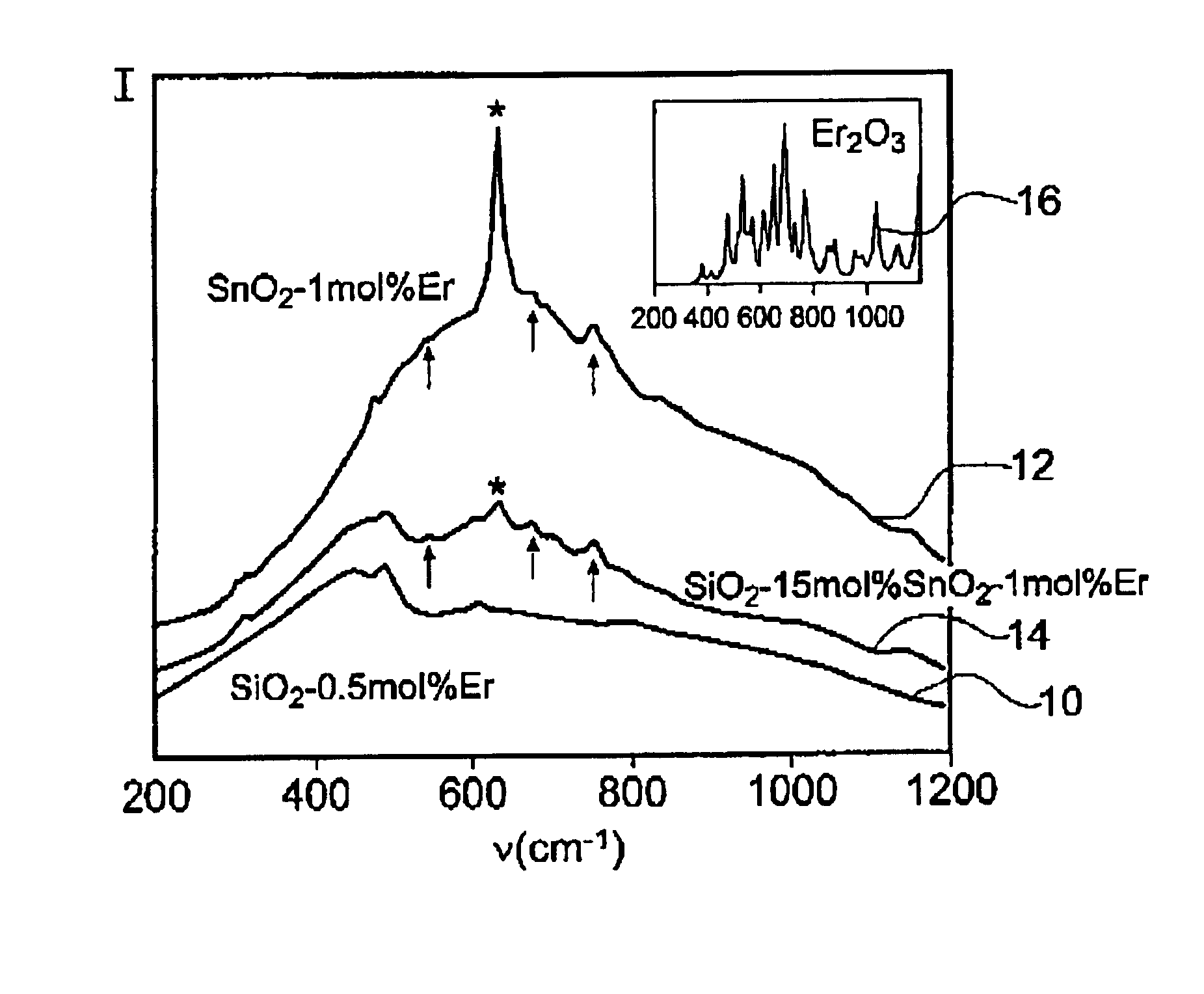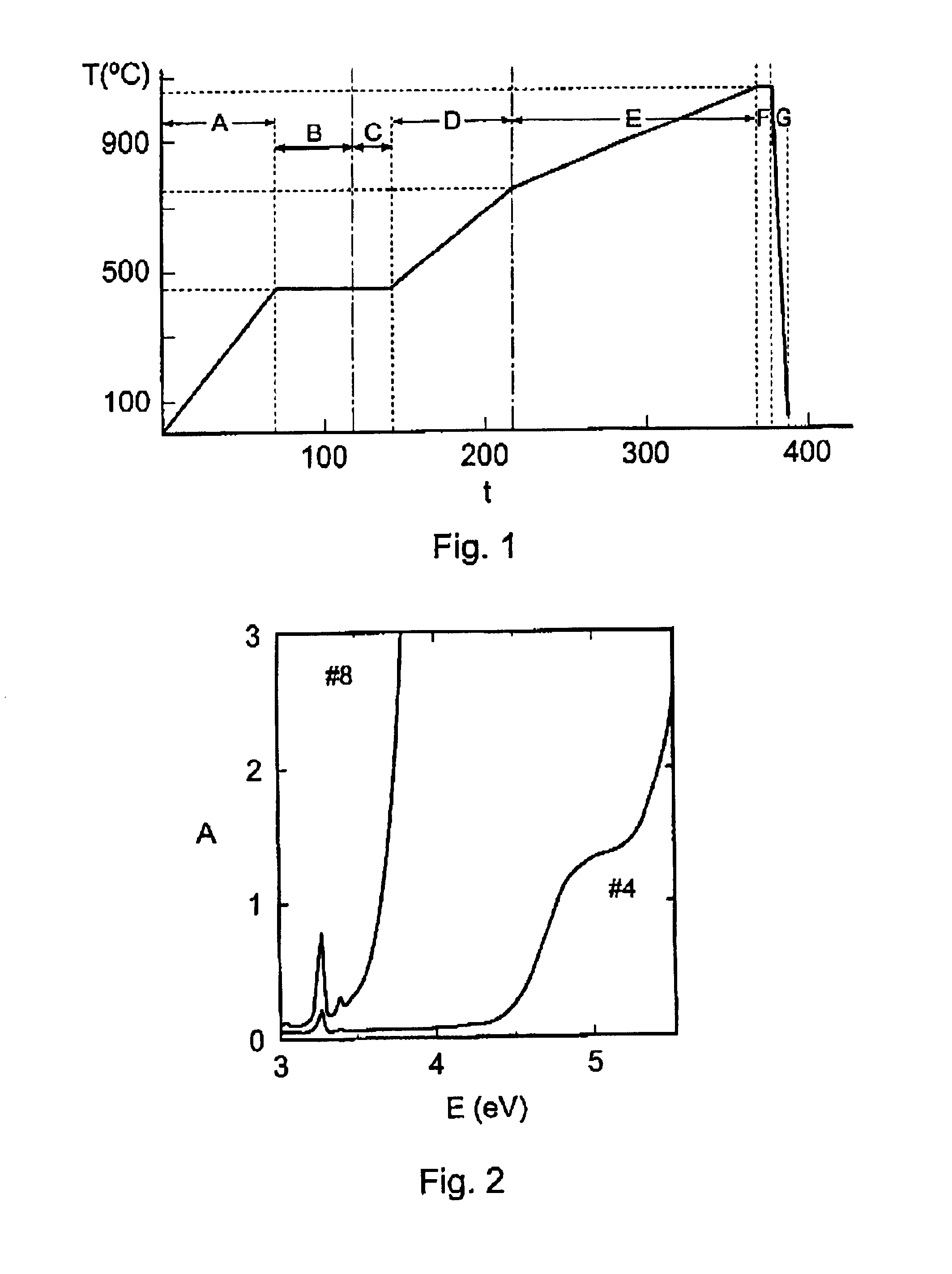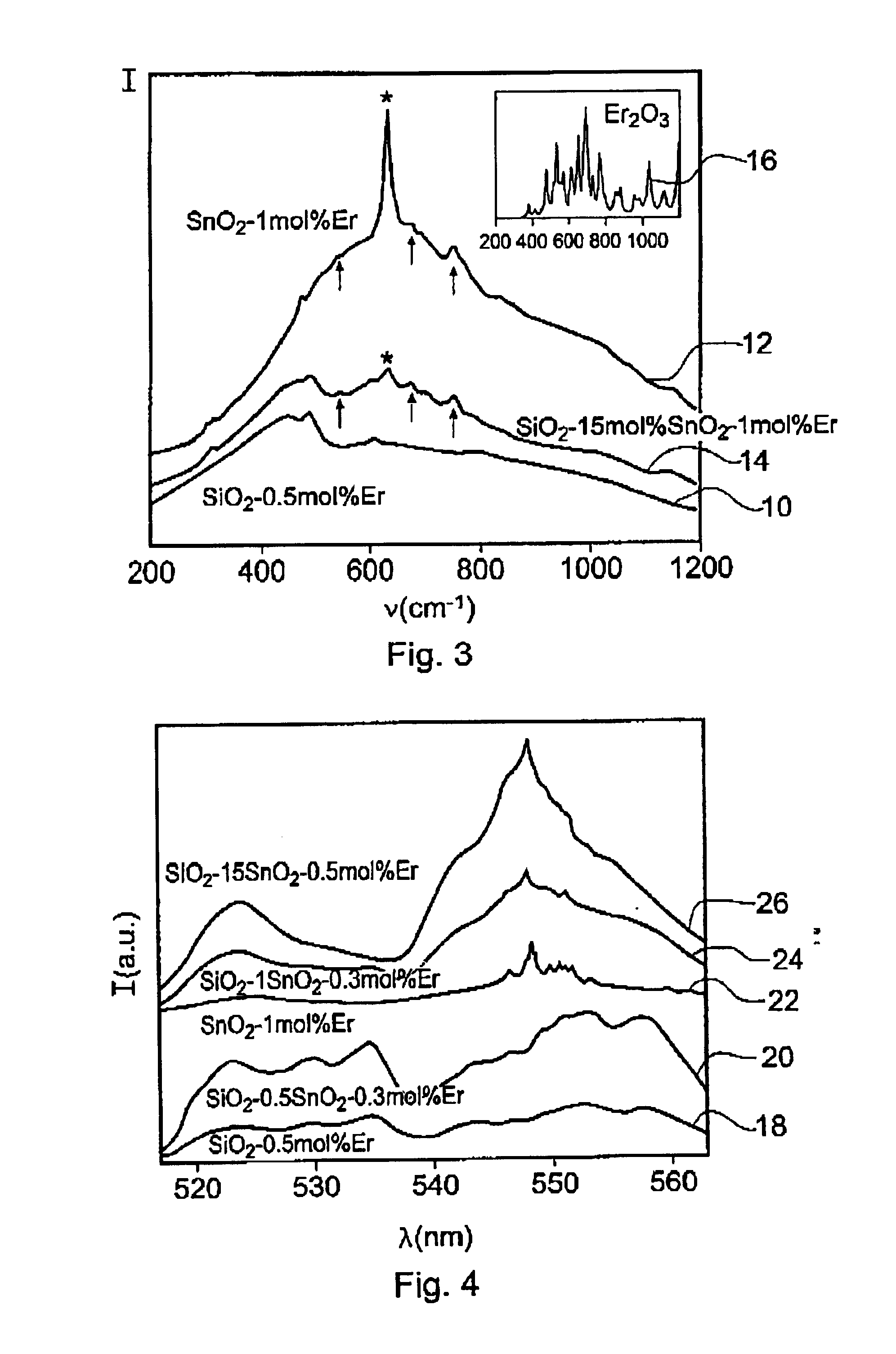Low phonon energy gain medium and related active devices
a low phonon energy and active device technology, applied in glass making apparatus, glass shaping apparatus, electrical apparatus, etc., can solve the problems of low compatibility of fluoride glasses with silica optical fibers, disadvantages as far as phonon energy, and high principal optical phonon energy, and achieve good control over the size of tin oxide clusters
- Summary
- Abstract
- Description
- Claims
- Application Information
AI Technical Summary
Benefits of technology
Problems solved by technology
Method used
Image
Examples
Embodiment Construction
Manufacture of the Gain Media
[0031]Optical gain media described in the following embodiments and examples are of the glass ceramic type comprising a silica host material which contains clusters of tin oxide at which active ions are concentrated.
[0032]Samples of the gain medium have been made by a sol-gel technique. Sol-gel processing techniques are known for producing glasses and glass ceramics. The techniques involve first making a solution (sol) of precursor molecules in a solvent The molecules react together to form a wet gel, from which a dryer xerogel is created by evaporation. The xerogel is then heated, or sintered, according to a thermal cycle, to produce the end glass or glass ceramic material.
[0033]In the present case, the sol was formed by co-gelling a number of precursors in a solvent. Tetraethoxysilane (TEOS, Si(OCH2CH3)4) provided silicon for silica, dibutyl tin-diacetate (Sn(CH2CH2CH2CH3)2(OOCCH3)2) provided tin, and active ions, in this case of the rare earth metal e...
PUM
| Property | Measurement | Unit |
|---|---|---|
| diameters | aaaaa | aaaaa |
| diameters | aaaaa | aaaaa |
| sizes | aaaaa | aaaaa |
Abstract
Description
Claims
Application Information
 Login to View More
Login to View More - R&D
- Intellectual Property
- Life Sciences
- Materials
- Tech Scout
- Unparalleled Data Quality
- Higher Quality Content
- 60% Fewer Hallucinations
Browse by: Latest US Patents, China's latest patents, Technical Efficacy Thesaurus, Application Domain, Technology Topic, Popular Technical Reports.
© 2025 PatSnap. All rights reserved.Legal|Privacy policy|Modern Slavery Act Transparency Statement|Sitemap|About US| Contact US: help@patsnap.com



